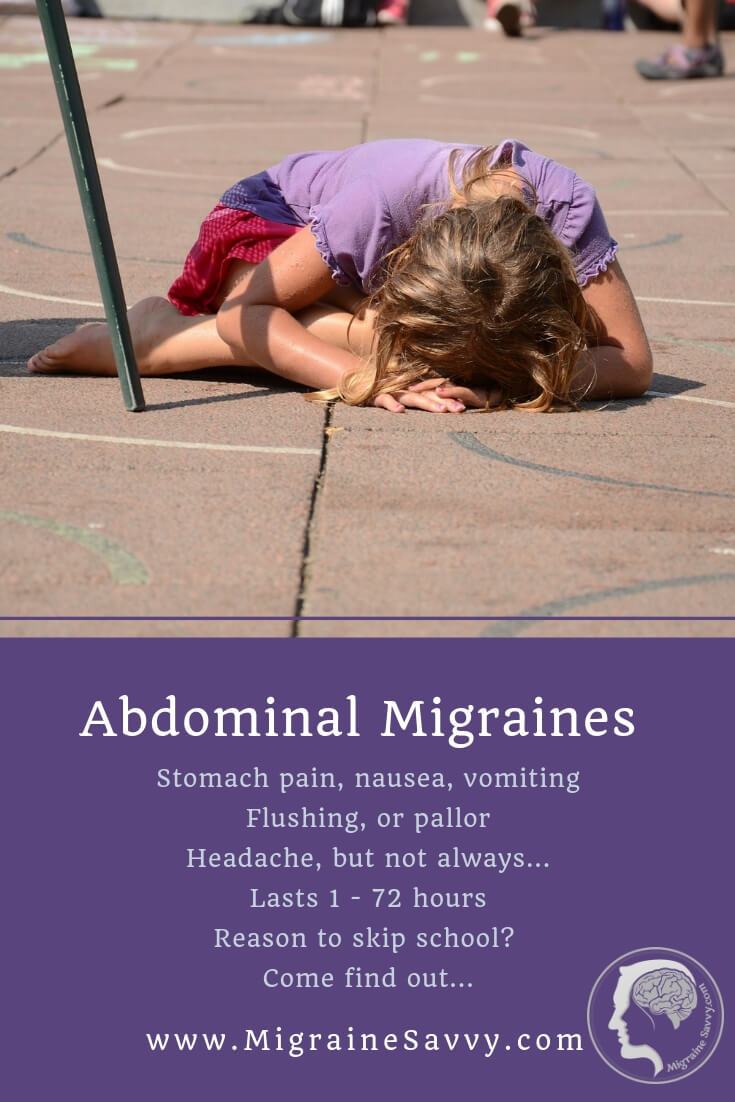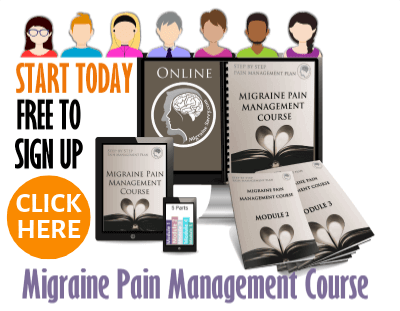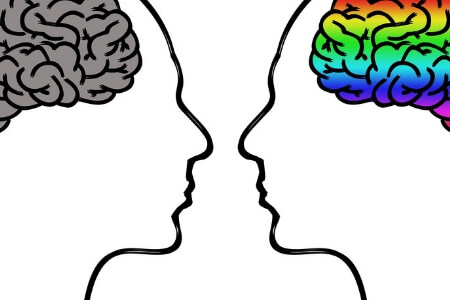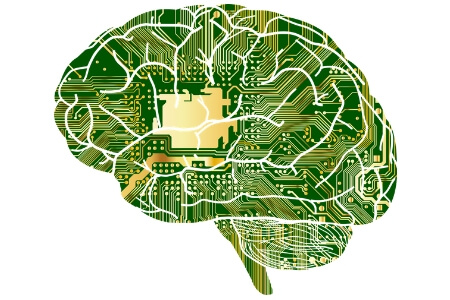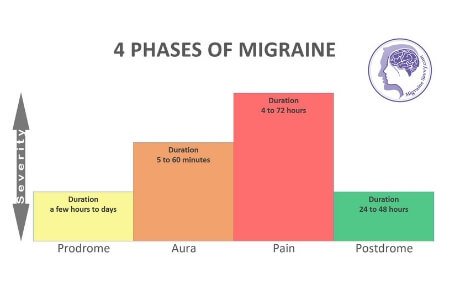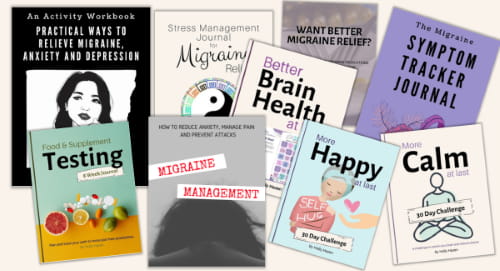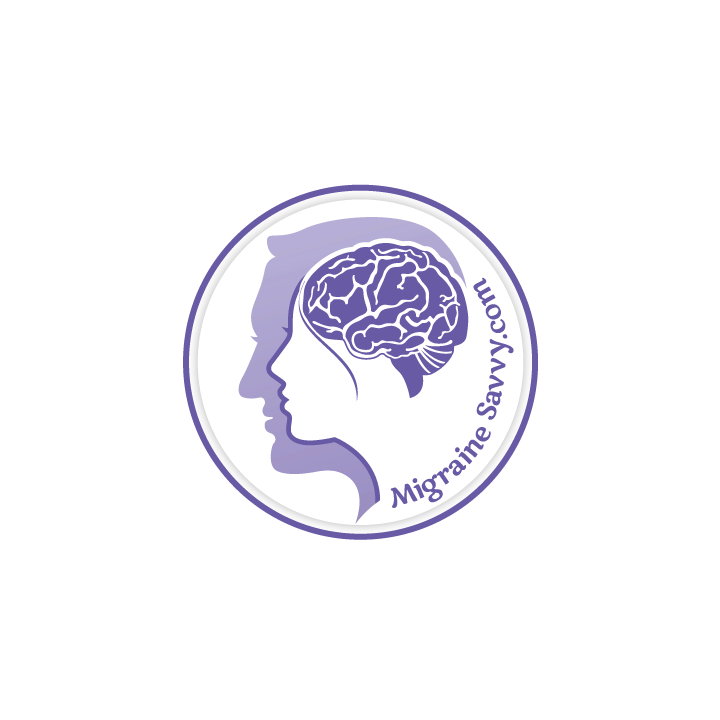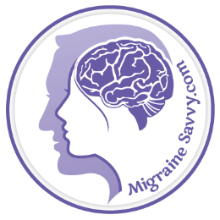- Home
- Migraine Types
- Abdominal Migraines
Magnesium Deficient = More Migraine Attacks
Science confirms this hidden trigger.
Get all 7 forms your body actually absorbs in one bottle.
🎁Save 10% with my code!
Magnesium Deficient = More Migraine Attacks
Science confirms this hidden trigger. Get all 7 forms your body actually absorbs in one bottle +
🎁Save 10% with my code!
Are Abdominal Migraines Just An Excuse To Leave School?
Does your child hate school? Do you think they might be faking abdominal migraines just to skip out of school?
Let's take a more in depth look, so you know what to watch for and what to do.
Abdominal migraines are most commonly known by the vomiting and recurring stomach pains that children typically experience. It is rare for adults to have this kind of diagnosis.
These episodes can be hard to diagnosis because these symptoms can also accompany colds and flu bugs.
The fact is that only a quarter of children experience vomiting with their migraine episodes, according to the research.
And... no.
I doubt that they are just an excuse to skip school!
My #1 Choice in Magnesium Supplementation
James Lance, MD. (1993) says that this type of migraine is most difficult to diagnose and is often dismissed in children.
A past history of vomiting is given by at least one quarter of his patients, which can occur as part of the migraine attack.
The statistics show that approximately 20 percent of children experience
stomach pain as part of their migraine attack and 25 percent experience
vomiting. That's a lot.

The Most Typical Symptoms of Abdominal Migraines To Watch For
The most typical symptom is stomach pain that leads to nausea and vomiting. It can occur without an actual headache. If they do have a headache, the pain usually comes and goes within a few hours.
So for children, it may be best to keep them at school in the sick bay while they recover and then they can just go back to class.
However, those two or three hours could be grueling. It does depend on how much pain they experience, and their temperament... and if you want to leave them there.
So it’s up to you really.
The bad news is that, children that have abdominal migraines in their childhood will most likely develop full migraine headaches in their adulthood.
The good news is that they are over quickly.
In some cases the moderate to severe "midline abdominal pain" that accompanies these attacks can last for one to seventy-two hours. You will need to learn your son or daughter's pattern for a bit, before you know the best way to help them through it.
Along with the stomach pain and other symptoms mentioned like nausea and vomiting, she/he may also experience flushing or pallor.
This type of migraine is "usually treated with anticonvulsant drugs” along with anti-nausea medications to take before or during the attack. Click here to go straight to diagnosis and treatment below.
Abdominal migraines can be scary and grueling for kids. So, it's up to you if they leave school... or not!
A Quick Review Of The Basics
- It's rare in adults
- 2% of all children may experience abdominal migraines
- Nausea and vomiting is common without accompanying headache pain
- Girls are affected more than boys
- A family history is common
- Sadly, they will most likely develop into migraine headaches in adulthood
- They are in reaction to a trigger
- Typical symptoms are: acute or severe pain in stomach near navel or midline of body, nausea, flushing or pallor, cramping, vomiting and unable to eat
- The abdominal pain may last for one to seventy two hours (which is up to three days)
- Attacks are sudden – they can occur without warning
Now you see how similar to a stomach flu bug this appears to be. Sudden attacks, hot flushing or cold chills, vomiting or not, headache or not.
It can be a puzzle for your doctor, so don't expect yourself to pick it right away.
I don't know how many times I've heard a parent say "I thought they were lying to get out of gym class."
My #1 Choice in Magnesium Supplements
Is There An Easy Fix On The Horizon?

Don't you just hate when your son or daughter is in pain, and it feels like there's nothing you can do?
This might help...
The exact cause remains somewhat elusive and unknown, but here is a link to the current theories around what causes migraine.
There are many theories, but the one that makes the most sense to me is about the chemical changes in the body, either from stress or food triggers.
The chemicals that effect the abdominal region are thought to be caused by are our natural ones - histamine and serotonin.
“Histamine is synthesized in all tissues, but is particularly abundant in skin, lung and gastrointestinal tract. Mast cells, which are present in many tissues, are a prominent source of histamine, but histamine is also secreted by a number of other immune cells.”
And
“approximately 90% of the human body's total serotonin is located in
the enterochromaffin cells in the gut, where it is used to regulate
intestinal movements.”
Therefore, both of these chemical changes could potentially contribute to both abdominal pain and migraines. There is also some evidence to support that daily stress and anxiety can cause fluctuations in these body chemicals. Support for these findings around psychological triggers is growing.
Plus there is a lot of research being done on the gut - brain connection in the nutrition world that is slowly becoming more accepted by mainstream medicine. Especially those who work with children.
Common food triggers for migraines like: chocolate, Chinese food (msg), and processed meats that contain nitrites, are also thought to be the culprit to trigger these migraines as well.
Silly eating habits that children have (hmmm... and adults) like excessive air intake whilst eating or say swallowing too much air (slurping soup, or talking while they eat) that causes bloating, may also trigger abdominal migraines or instigate other gastrointestinal symptoms.
Changing these things might be an easy fix.
My #1 Choice in Magnesium Supplements
Difficult To Diagnosis But Simple To Treat
First of all... let me tell you that there is effective abdominal migraine treatment available.
It may prove difficult for doctors to diagnose childhood migraines especially if you and your child are not familiar with the symptoms. They so closely resemble ordinary stomach aches, stomach flu, and other gastrointestinal disease.
Knowing if there is family history of migraine and abdominal migraines will play a key factor in the diagnosis.
Don’t be alarmed if the doctor orders a range of tests in order
to rule out other causes of the stomach pain. Try to find a doctor that works with or specializes in migraines headaches in children.
It's helpful to keep a written record of symptoms, previous activities and foods eaten. Whatever you can remember will be useful.
Here are some of the things to watch for, as your doctor might ask you about:
- How long do the sudden and severe stomach, or midline pain symptoms last?
- Does nausea and vomiting accompany the episode?
- Did decreased appetite or an inability to eat accompany the other symptoms?
- Did you notice excessive yawning, fatigue, or lethargy?
- Was there a headache or head pain, how long did that last?
- Did you see paleness or flushing, and how long did that last?
- Were there any other symptoms you noticed leading up to the pain phase?
As the cause of abdominal migraines is still mostly unknown, your doctor might treat them like a classic or common migraine, and prescribe serotonin blockers and tricyclic antidepressants.
Antidepressants are commonly used for childhood migraines as prevention and they will also help, potentially, with the emotional side effects of having to live with recurring migraine attacks.
This post Migraine in Children: Managing Their Emotional Side Effects, has more details.
And now to the treatment!
Two oral triptan medications are now approved for kids:
Almotriptan for ages 12-17
And Rizatriptan for ages 6 – 17 are both on label
If, in the rare case, the family of triptan drugs and Valproic acid are proven to assist adults with pain reduction in abdominal migraine. As both drugs have only some success, it might be trial and error before you find what works. Try to persevere with them, as any pain relief is good.
Even if you choose not to take the medication, at least you will know if they work for you or not, should you change your mind. Work with your physician every step of the way, to find your best solution.
Simple, but not easy!
Alternative Treatments That Work Effectively For Children
Biofeedback devices work well with children, or should I say children work well with biofeedback therapy.
These alternatives like biofeedback for migraines and home remedies for migraines in kids over 5 have quite a good track record now.
Your doctor may also be able to refer you to a good therapist for migraine support and pain counseling in your local area.
I think learning coping skills with this long term condition is essential to maintaining greater health and well-being, (for both of you).
Sleep is still the best way to deal with a migraine, including abdominal migraines.
Meditation CD's will help calm down the nervous system and help them drift off to sleep.
Here Are My Recommendations For Kids:
As an Amazon Associate, I earn from qualifying purchases - affiliate disclosure.
- Songs for the Inner Child: Shaina Noll (my all time favorite one)
If your child can have a deep sleep, it might be all they need.
Stay well,
Holly
WANT MORE TIPS? Subscribe to my newsletter and follow along on Facebook and Pinterest for all of the latest updates.
MIGRAINE TYPES Related Articles
How to be more MIGRAINE SAVVY right now...
References Abdominal Migraines:
1. Lance, James W. MD. (1993) Migraines and Other Headaches. Compass Publishing Co. Pty. Limited, Australia. p. 46.
2. National Headache Foundation NHF (2011) Headache Topic Sheet: Abdominal Migraines [Online], Available at: www.headaches.org/education.
3. Webmd.com (2010) Abdominal Migraines in Children and Adults. [Online], Available at: http://www.webmd.com/migraines-headaches/abdominal-migraines-children-adults. Accessed Jan 2018.
4. Stafford, D. and Shoquist, J. MD. (2003) Migraines for Dummies. Wiley Publishing, Inc: New York. p.54.
5. Bowen, R. (2008) Histamine and Histamine Receptors [Online], Available at: http://www.vivo.colostate.edu/hbooks/pathphys/endocrine/otherendo/histamine.html.
6. Wikipedia (updated 18 Jan 2018) Serotonin [Online], Available at: http://en.wikipedia.org/wiki/Serotonin.
Comments On Abdominal Migraines
Useless - by Nishia, Birmingham
My little man has been in excruciating pain for months and he has just been diagnosed with abdominal migraines. It interferes with all aspects of his life and school. His teachers moan so much because he misses so much in class. But because you can't see it, no one believes the pain that he is in or feels. I find it so upsetting as a parent because I feel helpless and I have to keep battling with schools and teachers because they don't understand. They moan because he can't attend and I say to them that "it's not just his school life, it interferes with all aspects of his life." I've noticed he is now so anxious of everything and everyone. He's more unsure and worries because he never knows how he will be from 1 hour to the next.
We have tried several different medications and his IBS medication gets changed constantly but nothing is helping at all right now. Sadly, even his dad doesn't understand. Neither do I fully, but as I'm the one that is with him 24/7 in the night and days when he is poorly, I know when he is in pain just by looking at him. I feel for everyone that suffers from migraines.
My Reply...
Hi Nishia, I have some ideas for you on this page - If Your Children Experience Migraines, This Is How To Help.
It has 7 options and a few tips for you to use to help them understand more.
To add answers or comments about this page please use my contact form. Please enter your title and add this page ref: [Abdominal Migraines].

